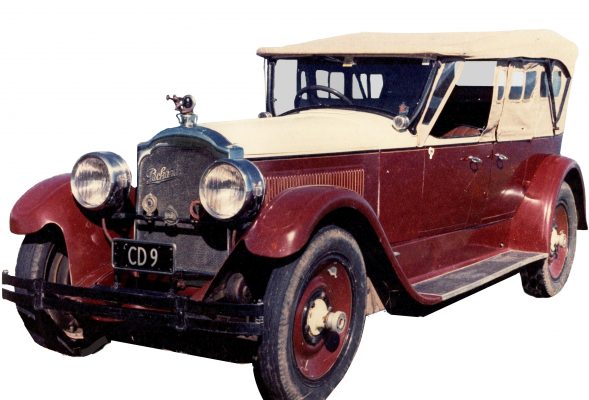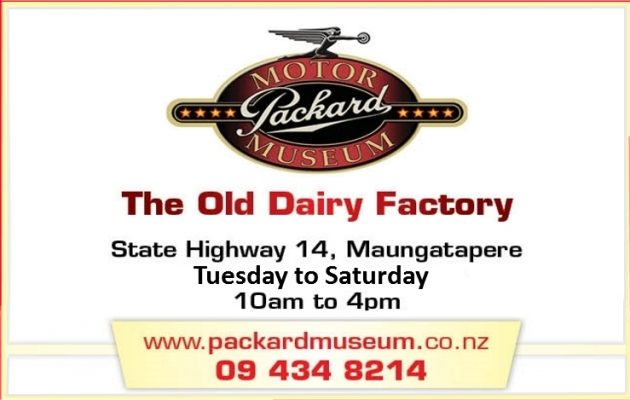 Kaipara Lifestyler Article
Kaipara Lifestyler Article
January 23 2018.
Cars, cars, cars and yes say the word motor-cycle sixty-five times and that’s what you’ll find in our collection at the Packard Motor Museum. Four large buildings set on five acres – you can display a lot of vehicles in such a place.
That’s what the late Graeme Craw, founder of the Packard Motor Museum did. Graeme started the collection on his farm at Anawhata, West Auckland and as it grew he shifted it to the Old Montana Winery. Changing circumstances meant another shift and the perfect place became available, part of the Old Northern Co-op Dairy Factory at Maungatapere.
The titles Graeme purchased contained a large storage shed, approximately the size of a football field. Graeme’s wife Moira stood in the empty shed and said ‘It will take him years to fill this,’ but six months later, you guessed it, the shed was full.
Graeme was keen on the history of the Industrial Revolution and how the machinery from this time changed the world. The mission of the museum is to exhibit the changes from this period and over the 20th century. The Packard cars are displayed in such a way to show developments, from the wooden spoked wheels of the early cars, through to the V-eight motors and aero wings of the 1950s vehicles.
Today the collection consists of 60 Packards, as well as other American and English cars, motor-cycles, trucks and military vehicles, steam engines and earthmoving machinery. Visitors are taken through the museum with a tour guide. That way we can tell you our stories and you can share yours.
However, we don’t forget the ladies. Our collections include sewing machines, typewriters (remember those things), a great collection of telephones and some early medical equipment, including a cure-your-head-ache with a self-administered electric shock machine.
This year we will be running start up tours. The first one is on Saturday 3rd of March, at 10.30am when a selection of vehicles will be started up by Fenton Craw, the founder’s son; a great opportunity to hear the different engines and ask those interesting questions.
Savvy Magazine Article
January 2018
PACKARD MOTOR MUSEUM
Vehicle of the month.
1919 Packard Opera Coupe.
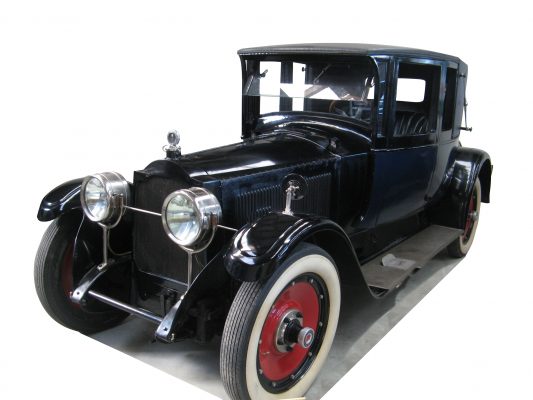
Ever wondered where these old cars have been? The stories they would tell if they could? Our 1919 Opera Coupe has one of those stories. The Opera Coupe is the oldest Packard car in our collection. The unusual body was designed and built by J.B. Judkins company, who built a number of bodies for the Packard Motor Car Company.
The car was generally driven by a chauffeur and seated two passengers in the back. A small fold down seat attached to the floor was available in case you needed to take a doorman with you. In the back of the car are glass vases for fresh flowers. These features speak volumes about the car and what sort of person would have owned it.
However, the 1919 Opera Coupe was a car with a double six engine (V12) developing 90hp and getting up to speeds of 85 miles an hour, a fast car for its day. This made it the perfect car for ‘booze runs’ across the Canadian border. During the 1920s, alcohol would be transported to the USA as that government had outlawed the manufacture, sale and transportation of intoxicating liquors. This period is known as ‘Prohibition’.
During this time, the car was allegedly owned by a notorious counterfeiter and bootlegger, high on the FBI’s wanted list. The car was fitted with a copper tank in place of the backseat to facilitate the carrying of large quantities of ‘joy-juice’ as it was called. However, it seems after a police chase, the car was abandoned in a ditch. Customs seized the car and auctioned it off.
It found its way to Jerry Stone who was looking for a challenge. Jerry painstakingly rebuilt the car. Eventually the car was put up for sale. Graeme Craw spotted the car in an American magazine. He purchased it and imported it into New Zealand. The car now sits in the Packard Motor Museum as part of our Packard story.
Savvy Magazine Article
February 2018
Packard Motor Museum
Vehicle of the month
1924 Packard, 7 seat, Straight Eight, Tourer.
The number plate reads ‘CD9’and she’s the vehicle that began Graeme Craw’s love of Packard motor cars. The first owner, the Hotel Cargen of Auckland purchased the 1924 Packard to collect guests from the Railway station. Changes in ownership eventually saw the car sitting on a lawn for sale at Mt Maunganui.
Now Graeme’s story begins. Graeme, his wife Moira and Moira’s sister went to a stock auction near Te Puke. They purchased ten Angus heifers but at the end of the auction thirteen sheep came up for sale. Graeme, who couldn’t resist a bargain, bought the sheep. Except he had a problem, he couldn’t transport the sheep and cattle together.
Graeme’s sister-in-law told him of a big, old car for sale and maybe he could buy that to cart the sheep. Graeme purchased what turned out to be a Packard Tourer, with a straight eight motor. He pulled out the back seat and carted the thirteen sheep to his farm at Anawhata, West Auckland.
Graeme was impressed with the Packard’s engineering but in 1954 he sold the car to a friend, Bruce Anderson. Bruce restored the vehicle and used it extensively on Vintage Car Club events. The car then passed through several more owners before being put up for sale at New Plymouth in 1974. By now Graeme was seriously collecting packards so he was keen to buy the car back. Unfortunately money was short. He went to the bank manager for a loan but ended up with money to buy hay!
Money procured, the family drove to New Plymouth to collect the car. On the way home they stopped near the top of Mt Messenger for a cup of tea. However, driving up the hill from the other direction was the bank manager and his family. The manager spotted the packard and called to Graeme, ‘mighty fine load of hay you’ve got there, Graeme’.
Today CD9 is displayed at the Packard Motor Museum. It’s possibly the oldest production straight eight in the world.
Savvy Magazine Article
March 2018
Packard Motor Museum
Vehicle of the month
NZR Tank Locomotive A62 (Steam Engine)
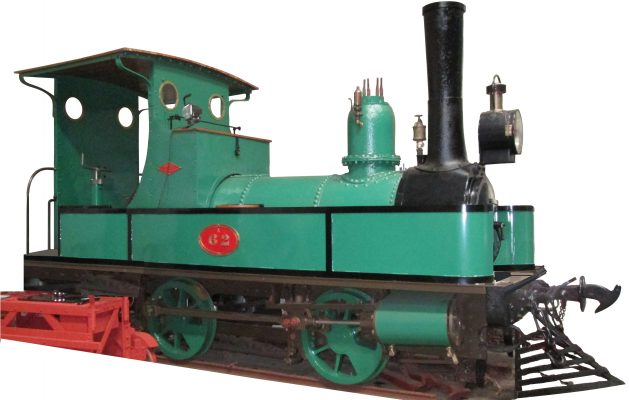
It’s not all cars at the Packard Motor Museum. Our oldest vehicle is a steam locomotive built in 1873, referred to by us as Dubs. In the early 1870’s the Hon. Julius Vogel proposed the Public Works Act which kicked off the establishment of the railways in New Zealand.
A whole range of tank engines were ordered from England and Scotland to power this railway. They were labelled with a letter indicating their class. The A of the A62, designated the first engines used to build this railway system.
Twelve Dubs engines were ordered from Henry Dubs’ Glasgow locomotive works. Our Dubs ended up hauling logs across the beach tressels from North Piha to the sawmill up the Piha Valley. The trouble was sand constantly blew in from the west and built up on the rails. Although men were engaged to keep the track clear it wasn’t uncommon for the locomotive to tip over.
We have some great photos of Dubs being hauled upright and onto the tracks by men using only ropes, screw jacks, timber jacks, crowbars etc. Today you would call in a crane.
In 1926 Dubs was retired and put on display outside the Otahuhu railway workshops. She sat there for thirty years until Jack Ryder purchased her and took her to his museum. Again A62 sat.
Finally Graeme Craw purchased the train, but to move it, Dubs had to be completely dismantled. Graeme took delivery of several truck and trailer loads of A62 parts. These were transported to the museum at Maungatapere.
Now the daunting task of putting the engine back together confronted Graeme and his team. It turned out most parts were stamped with the Works number of the engine and whether they were left or right.
Many hours were spent sandblasting, welding, painting etc. New water tanks needed to be made and a new matai tongue and groove roof made. Finally the early whale-oil headlights were fitted. Project completed. Now visitors can view the Dubs A62 in our Steam Room.
Savvy Magazine
April 2018
Packard Motor Museum
Vehicle of the Month
WW2 Willys Jeep
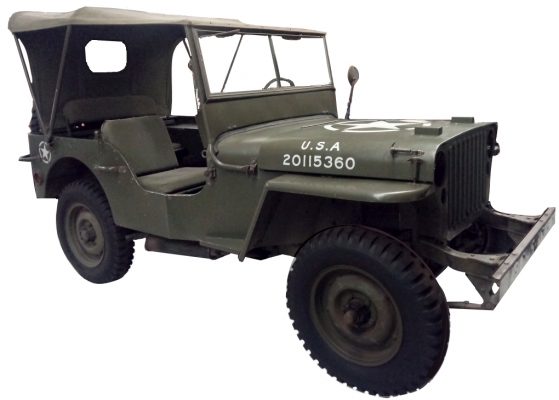
There are a few stories floating around about how the ‘Jeep’ got its name. The main story is ‘Jeep’ came from the initials GP (general purpose) as pronounced in American English slang. Another story claims the name was influenced by Pop-eye the sailor’s pet, Eugene the Jeep, in the 1936 E.C. Segar comic strips. Whatever the source, the Jeep fulfilled its purpose of being a light-weight, four-wheel-drive, general purpose vehicle.
During WW1 the American military used larger 4×4 trucks, motorcycles and light motor vehicles including some model T Fords, but by the late 1930s they wanted to replace this aging fleet with a light, cross-country reconnaissance vehicle.
In July 1940 U.S automobile manufacturers were asked to submit a design for a ‘general purpose, personnel, or cargo carrier especially adaptable for reconnaissance or command, and designated as ¼-ton 4×4 truck.’ Because the war was underway, manufacturers were given 11 days to put in a bid, 49 days to submit their first prototype and 70 days to complete 70 test vehicles.
The technical specifications were equally demanding. The main features being, it had to be four-wheel drive, hold a crew of three on a wheelbase of no more than 75 inches, be powered by an engine capable of 85 ft-lb of torque and have a maximum empty weight of 590 kg.
Only two companies bid but the only company able to deliver the pilot model in 49 days was the American Bantam Car Company. However, Bantam was unable to produce the quantities demanded by the army, so the War Department forwarded the Bantam blueprints to Ford and Willys, claiming the government owned the design. In the end Willys won the military contract due to its more powerful engine – the Go Devil – which soldiers raved about, and its lower cost. The weight however was raised to 980 kg as the lower weight was unrealistic.
Savvy Magazine
May 2018
Packard Motor Museum
vehicle of the month
1932 Packard 900
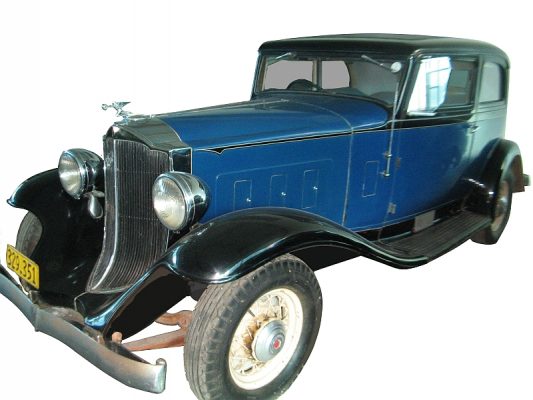
Walk into our ‘Old Packard Room’ and your eye maybe taken by a smart blue car with an unusual grill – nick-named the Shovel Nose. The body style is a coupe sedan and under the bonnet is a straight eight engine of 319 cubic inches and generating 110 horse-power. This motor was known as the light eight.
The Packard 900 was Packard’s first attempt to produce a cheaper entry-level vehicle into the luxury car market and also to boost sales at the height of the depression. The idea was to lure buyers from rival car makers; but with the advanced styling and modern features of the 900, the car was desirable to buyers in the Packard market. Therefore, buyers who would have purchased the Senior Packard cars tended to buy the 900 instead. This model was produced for one year only.
When viewing the car, one of the most noticeable features, is the ‘scoop nose’ grill, a design that was only produced in on the Packard 900. Henry Ford claimed that this car’s styling influenced his 1933/34 Ford V8 Victoria.
Our particular 900 has a very interesting story. It was the display car exhibited at the January 1932 New York Auto Show. It was purchased at the show by Robert McDougall, a well-known Christchurch biscuit and confectionery maker (Aulsebrooks) who also donated the money to build the McDougall art gallery in Christchurch.
Robert McDougall used the car after the show to tour extensively around the USA and possibly Europe. He then tried to buy another new right-hand drive 900, model 563 but was told that no car of this style was available. The Packard factory then offered (no doubt with a financial encouragement) to remake his present car into a right-hand drive. In October 1932 the car was shipped out to New Zealand. Graeme was the fourth owner purchasing the vehicle in 1975. It is one of our rarest cars and reputedly the only right-hand drive Packard 900 in the world.
